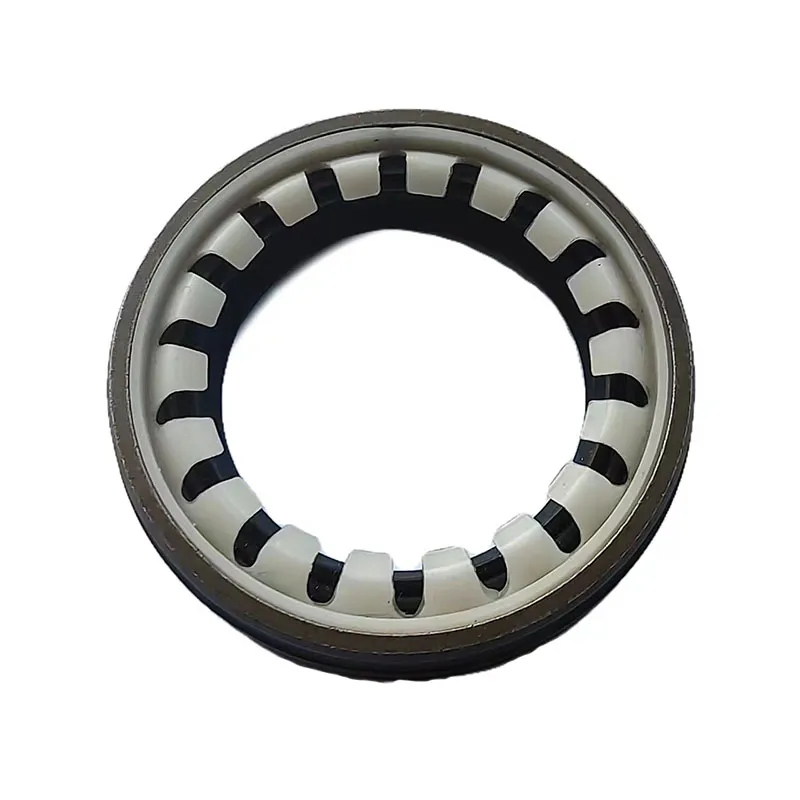Rotary Shaft Oil Seals for Effective Leakage Prevention and Equipment Protection
Understanding Oil Seals for Rotating Shafts
Oil seals play a crucial role in various mechanical systems, especially where rotating shafts are involved. They are essential components designed to prevent the leakage of lubricants while keeping contaminants out. In industries ranging from automotive to heavy machinery, oil seals contribute significantly to the efficiency and longevity of machinery.
What is an Oil Seal?
An oil seal, also known as a lip seal or radial shaft seal, is typically made of rubber or elastomeric materials. It comprises a circular body with a flexible lip that adheres to the surface of a rotating shaft. The primary function of the oil seal is to seal the gap between the rotating shaft and the stationary housing, preventing lubricant from leaking out while simultaneously blocking dirt, dust, and moisture from entering the system.
The Importance of Oil Seals
1. Lubrication Retention In any system utilizing a rotating shaft, proper lubrication is imperative. Oil seals help maintain the necessary lubricant levels, which reduces friction and wear on the components. Insufficient lubrication can lead to increased temperatures and premature failure of the machinery.
2. Contaminant Protection Particularly in harsh operating environments, contaminants can cause significant damage to internal components. Oil seals effectively protect against dust, dirt, and moisture intrusion, which can degrade the lubricant and damage the moving parts.
3. Operational Reliability By preventing fluid leakage and keeping contaminants at bay, oil seals ensure that machinery operates reliably. This reliability is especially crucial in applications where unexpected breakdowns can lead to downtime and financial losses.
Types of Oil Seals
There are several types of oil seals available, each designed for specific applications
oil seal for rotating shaft

1. Single Lip Seals These are the most common type of oil seals, comprised of a single sealing lip. They are typically used in applications where contamination levels are low.
2. Double Lip Seals Featuring two sealing lips, double lip seals provide an added layer of protection against contaminants. They are ideal for applications where more rigorous sealing is required.
3. Spring-Energized Seals These seals have a spring behind the lip that applies additional pressure to the sealing surface. This design is useful in high-speed applications or where the operating conditions lead to variations in sealing surface.
4. PTFE Seals Made from polytetrafluoroethylene (PTFE), these seals exhibit excellent chemical resistance and low friction. They are often used in applications involving aggressive fluids or extreme temperatures.
Installation and Maintenance
Proper installation of oil seals is vital to their effectiveness. Misalignment or improper seating can lead to premature failure. It’s essential to carefully follow manufacturer guidelines during installation and ensure that the shaft is clean and free from any debris.
Regular inspection and maintenance of oil seals should not be overlooked. Look for signs of leakage or wear, and replace seals promptly if any defects are detected. Early intervention can prevent more significant issues down the line, including damage to the rotating shaft and the surrounding components.
Conclusion
Oil seals for rotating shafts are indispensable components in modern machinery, offering significant benefits in lubrication retention, contaminant protection, and overall operational reliability. Understanding the various types of oil seals and their importance in mechanical systems can help engineers and maintenance personnel make informed decisions about their usage and maintenance. By ensuring that oil seals are correctly installed and regularly inspected, businesses can enhance the performance and longevity of their machinery, ultimately driving productivity and profitability.
-
Understanding Different Types of Oil Drain Plugs: A Comprehensive Guide
News Jun.27,2025
-
The Role of Nylon Washers in Oil Drain Maintenance: A Practical Guide
News Jun.27,2025
-
The Essential Guide to Drain Plug Washers: Types, Uses, and Best Practices
News Jun.27,2025
-
Everything You Need to Know About Washer and Plug Sealing: Polaris-Specific and General Tips
News Jun.27,2025
-
A Comprehensive Guide to Different Types of Oil Drain Plugs for Efficient Maintenance
News Jun.27,2025
-
A Complete Guide to Oil Drain Plug Washers: Tridon and Euro Car Parts Solutions
News Jun.27,2025
-
Understanding Oil Drain Plugs: Types, Issues, and Replacements
News Jun.26,2025
Products categories















